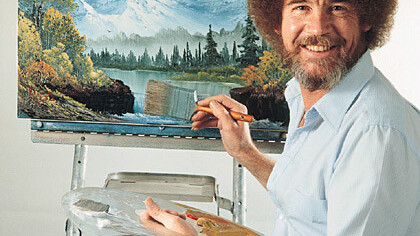Painting always felt like a desired but distant dream for me. Every time I visit an art museum, I sit and stare at masterpieces — fascinated by the deep talent that goes into it. But picking up an activity I knew I wouldn’t excel at seemed futile.
A few months ago, I decided to bite the bullet and learn how to paint. After a few weeks, I found my attitude shifting. Here are three lessons painting taught me.
Step back to see the big picture
When I just started to paint, I was mostly focused on small details. For instance, instead of outlining the body I’d focus on painting the “perfect hand”. But doing so prevented me from moving forward. I was going back and forth, sketching and erasing in an endless limbo.
Only when I took a step back and started painting general body parts, I managed to complete the painting in a reasonable time.
The same can happen while managing a project. Getting hung up on small details keeps the project from moving forward, and throws you into an endless loop — causing frustration and delays.
I’ve learned that small details are constantly changing, while the big picture usually stays the same. Taking a step back to see the big picture and recalculating the priority of small details versus the bigger parts of the project is a cornerstone for project success.
Be patient: It takes time until all the stars are aligned
In the beginning, it’s hard to imagine what the finished painting will look like. But it’s important to remember that the process takes time. Only towards the end, can you start to see how everything comes together, and how you’ve created a whole that’s greater than the sum of its parts.
It might be frustrating at first — all the work that you’ve poured into your painting still looks incomplete half way through. So you accelerate your brush strokes. You end up damaging the painting, all because your mind convinced you that your piece had to be perfect from the start.
A project with many moving parts can produce similar frustration. How can a final project come together when seven people are working on twenty different tasks? This inability to foresee the future might cause your team and you to cut corners and speed up the process.
But as the person who needs to orchestrate the project, it’s important to be patient and understand that it takes time until the stars align. Convey the message that a bright future takes time.
Retrospective evaluation
Painting takes time, effort, and creativity. It’s easy to get attached to your creations. Now and then after drawing for a few hours you realize that the outcome is not aligned with your expectations and desired result.
It’s important to stay objective (as much as you can) and assess if the cost of drawing something new from scratch is lower than trying to fix an irreparable painting. It’s tough to decide to move next to the next canvas and clean your plate from the colors that you worked so hard to create. But sometimes it’s necessary and is the right choice.
Throughout a project some aspects of it need to be ceased as they are not relevant anymore or their cost is too high. The costs that were invested till the crossroad of the decision shouldn’t be part of the considerations as they cannot be restored or changed. Therefore the opportunity cost should be the northern light of the project.
Wrapping up
Painting is just like project management. You bring an idea to life while planning and envisioning the required outcome. While many think that art lives in a vacuum outside the real world, in reality the process of painting can offer valuable insights into how we approach other aspects of our lives.
Get the TNW newsletter
Get the most important tech news in your inbox each week.





